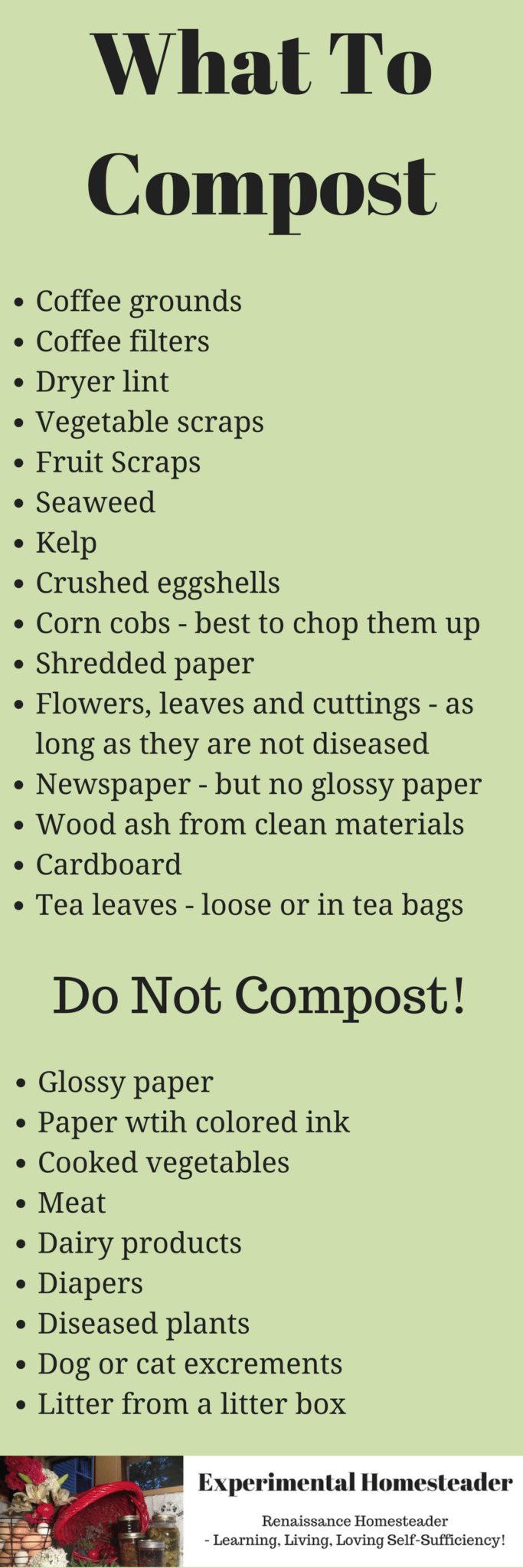Creating compost at home is not only beneficial for your garden, but it also contributes to the overall health of the environment. Composting allows you to recycle organic waste materials and turn them into nutrient-rich soil that helps plants grow and thrive. In this post, we will explore the process of making compost at home, step by step.
Step 1: Gather your materials
To start composting, you will need a combination of “green” and “brown” materials. Green materials include fruit and vegetable scraps, coffee grounds, and grass clippings. Brown materials, on the other hand, consist of dry leaves, twigs, and shredded paper. Aim for a balance of about 50% green and 50% brown materials. This ensures proper decomposition and prevents any unpleasant odors.
 Step 2: Choose a composting method
Step 2: Choose a composting method
There are various methods of composting, and you can choose the one that suits your needs and space availability. Some popular methods include:
- Compost bins: These are enclosed containers that help retain heat and moisture, speeding up the decomposition process.
- Compost piles: Simply create a pile of your compost materials in a designated area of your yard. Make sure to turn the pile regularly to aerate it.
- Worm composting: Also known as vermicomposting, this method uses worms to break down organic waste. You can keep a worm bin indoors or outdoors.
Step 3: Layer your compost materials
Start by layering your green and brown materials in your chosen composting container or area. Aim for a ratio of roughly 3 parts brown to 1 part green. Each layer should be a few inches thick. As you add more materials, lightly moisten each layer to keep the compost moist but not soggy.
 Step 4: Turn your compost regularly
Step 4: Turn your compost regularly
Turning your compost helps aerate the pile and speeds up the decomposition process. Use a garden fork or shovel to mix the materials thoroughly. Aim to turn your compost at least once a week. You can also monitor the temperature of your compost pile – it should reach between 120-160°F (49-71°C) to ensure effective decomposition.
Step 5: Maintain your compost
Regular maintenance is essential to ensure a successful composting process. Make sure to keep your compost moist by watering it as needed. Avoid over-watering, as this can lead to waterlogged compost. Additionally, monitor the compost for any unpleasant odors or signs of pests. If you notice any issues, adjust the materials or aeration to rectify the problem.
 Step 6: Harvest your compost
Step 6: Harvest your compost
After a few months, your compost will transform into a dark, crumbly substance that resembles soil. This is a sign that your compost is ready to be used. Use a screen or mesh to sift out any larger particles, and then spread the compost in your garden beds, around plants, or use it as a potting mix.
Composting at home not only helps reduce waste going to landfill but also enriches your soil and promotes healthier plant growth. By following these steps, you can create your own nutrient-rich compost and make a positive impact on the environment. Start composting today and watch your garden thrive!
Sources:
- Exotic Gardening: How To Make Compost At Home - Exotic Gardening
- Pinimg: Compost, Composting 101, Garden compost
- Pinimg: Pin on Teach Starter
- WasteWell: What Can I Compost At Home? – WasteWell
- Pinimg: compost green to brown ratio - Google Search | Diy compost, Garden
- Pinimg: A Resourceful Compost List | Compost, Composting at home, Home
- Stacy Risenmay: Composting 101 + FREE Printable - Stacy Risenmay
- David Domoney: A complete guide to.. composting - David Domoney
- Pinimg: mix it up! composting with brown and green. | Garden compost, Compost
- DIY Danielle: https:\/\/diydanielle.com\/wp-content\/uploads\/2016\/04\/compost-guide.jpg